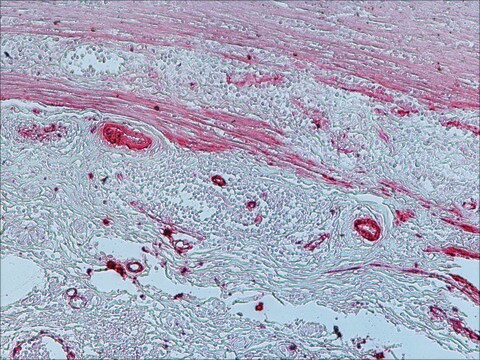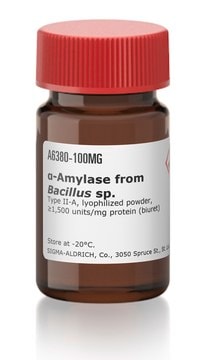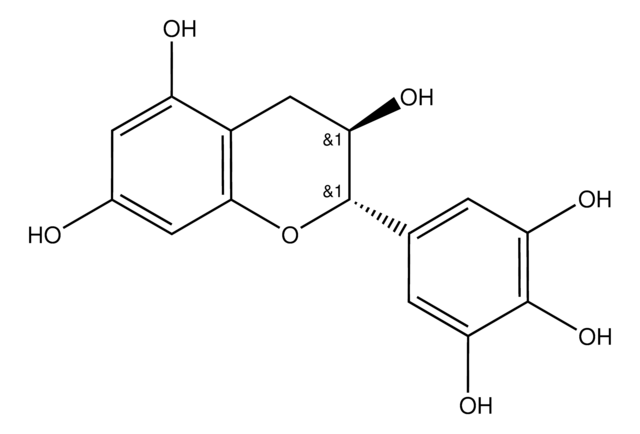Wichtige Dokumente
A4605
Anti-iASPP antibody, Mouse monoclonal
clone LXO49.3, purified from hybridoma cell culture
Synonym(e):
Anti-Inhibitory Member of the Apoptosis-stimulating Protein of p53 Family, Anti-RAI, Anti-Rel-associated Inhibitor
About This Item
Empfohlene Produkte
Biologische Quelle
mouse
Qualitätsniveau
Konjugat
unconjugated
Antikörperform
purified immunoglobulin
Antikörper-Produkttyp
primary antibodies
Klon
LXO49.3, monoclonal
Form
buffered aqueous solution
Mol-Gew.
antigen ~100 kDa
Speziesreaktivität
mouse, human
Konzentration
~2 mg/mL
Methode(n)
immunocytochemistry: suitable
immunoprecipitation (IP): suitable
microarray: suitable
western blot: 0.1-0.2 μg/mL using total cell extract of human osteogenic sarcoma (U-2-OS)
Isotyp
IgG1
UniProt-Hinterlegungsnummer
Versandbedingung
dry ice
Lagertemp.
−20°C
Posttranslationale Modifikation Target
unmodified
Angaben zum Gen
human ... PPP1R13L(10848)
mouse ... Ppp1r13l(333654)
Allgemeine Beschreibung
Anwendung
- immunoblotting
- immunocytochemistry
- immunoprecipitation
Biochem./physiol. Wirkung
Physikalische Form
Haftungsausschluss
Sie haben nicht das passende Produkt gefunden?
Probieren Sie unser Produkt-Auswahlhilfe. aus.
Lagerklassenschlüssel
10 - Combustible liquids
WGK
nwg
Flammpunkt (°F)
Not applicable
Flammpunkt (°C)
Not applicable
Hier finden Sie alle aktuellen Versionen:
Besitzen Sie dieses Produkt bereits?
In der Dokumentenbibliothek finden Sie die Dokumentation zu den Produkten, die Sie kürzlich erworben haben.
Unser Team von Wissenschaftlern verfügt über Erfahrung in allen Forschungsbereichen einschließlich Life Science, Materialwissenschaften, chemischer Synthese, Chromatographie, Analytik und vielen mehr..
Setzen Sie sich mit dem technischen Dienst in Verbindung.







